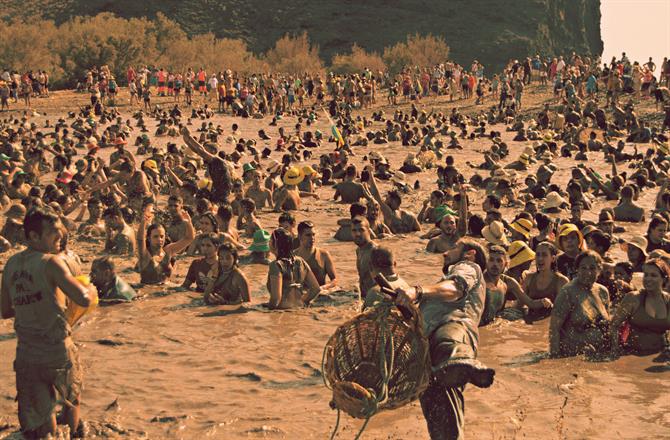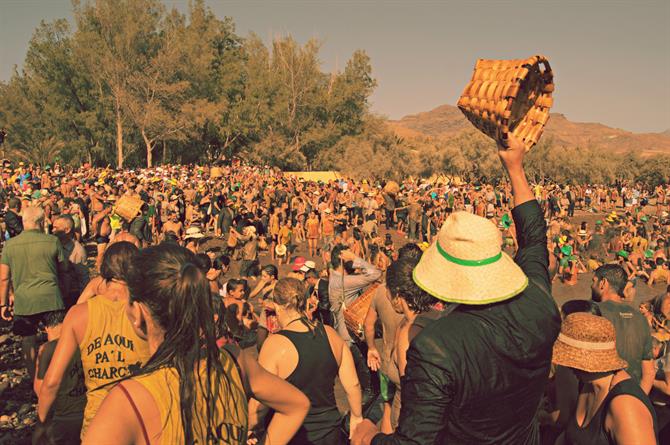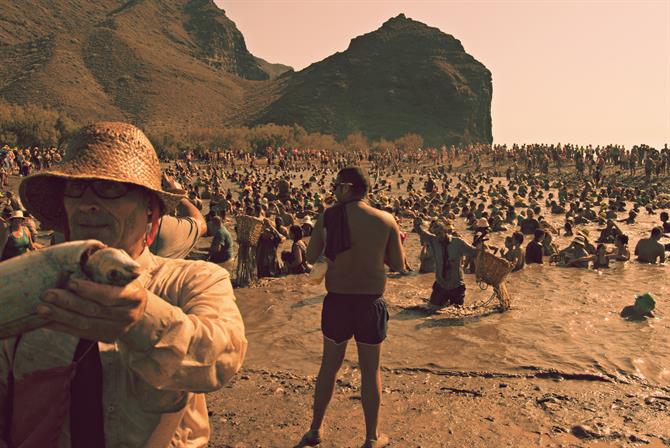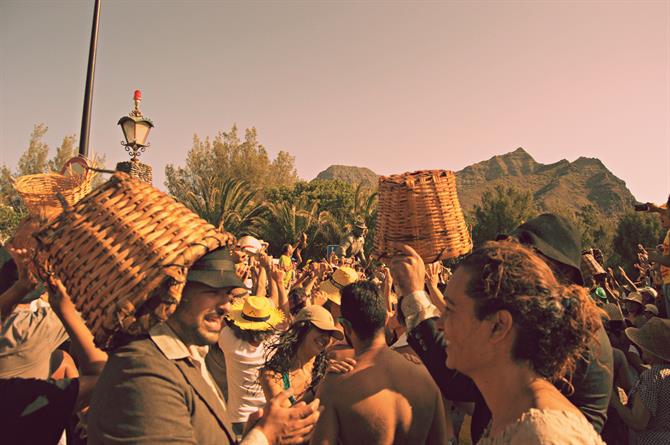Some fiestas are not as old as they look on Gran Canaria, decades young rather than centuries ancient. One thinks of the Traída de Barro, for example. But La Aldea de San Nicolás' Fiesta del Charco boasts some heritage as it goes way back, deep into the last millennium.
Fiesta del Charco dos and don'ts

Do put the date of the Fiesta del Charco in your diary. It's held every 11th of September, as part of La Aldea's fiestas in honour of the municipality's patron saint: San Nicolás de Tolentino. Set your alarm too, as a rocket firework has been launched at 5:00pm every fiesta since 1950 to mark the point at which the 15,000+ revellers can enter the charco (pond).
Don't cross the white line which forms a boundary around the charco, also known as La Marciega, if you plan to stay dry. For if you do, a fellow reveller is perfectly entitled to throw you in. I found this out when I stepped over the line to take a photo of the partygoer launching himself into the pond above, but his friends took pity on me as I was wielding a camera at the time.
Do wear more than swimwear. In 1766, the Bishop Delgado y Venegas threatened those who persisted in near nudity with punishments ranging from excommunication to imprisonment. To appease the church, revellers, to this day, tend to wear t-shirts or vests over swimming costumes.
Fiesta del Charco facts and figures

La Marciega is shaped like a football pitch, sharing the dimensions of the field at Athletic Bilbao's San Mames stadium. Its water is murky brown in colour as I discover as I put aside my camera to wade on in. It felt like I was in the chocolate river which proved so irresistible to that famous glutton from the world of film, Augustus Gloop.
Seasoned revellers wear traditional Canarian clothing and use baskets as a net, for storage rather than to catch fish with. But although the fish are later weighed to see who's got the bigger catch, it's the taking part which is more important. With everybody getting involved; from children all the way up to grandparents.
Mullets galore

The particular fish that's the attraction of the mainly amateur anglers is the lisa. Its Latin name will be more familiar to you, that of Mugli labrosus. Yes, ladies and gentlemen, we're talking mullets. And pity your cackhanded writer who doesn't even cop a feel of a mullet, let alone catch one.
After the jump

The legendary Banda de Agaete, fiesta band for hire, soundtrack the main event. Before the last of the revellers trudge out of the charco to wash away the pong of pond in the Atlantic on the beach below. Although others prefer to travel slightly further afield to the port; to fling themselves into the ocean instead.
After drying themselves, some will join their families barbecuing in shady Parque Rúben Díaz. Others will prefer to strut their stuff outside the DJ booth on the main street. A street which is closed to traffic for the duration of the fiesta.
There is, however, a special bus service which drops people off at the bridge-end of the main street. Although, it doesn't pick them up again afterwards. So, exhausted by the day's events, I opt to take a taxi back to my temporary abode. Yes, the mother-in-law's finca's a great base for one of Gran Canaria's famously fun fiestas.
